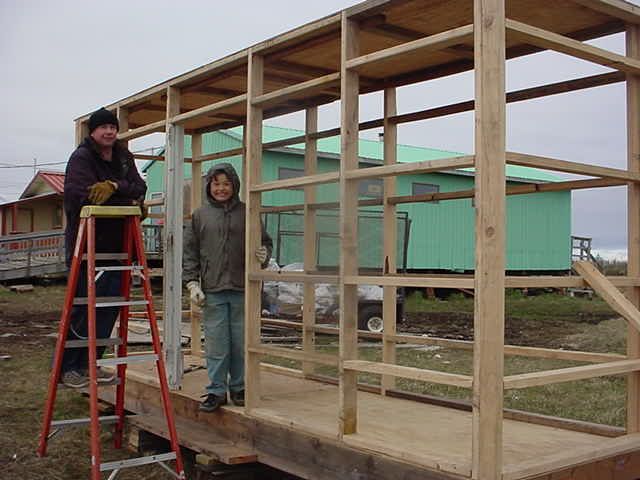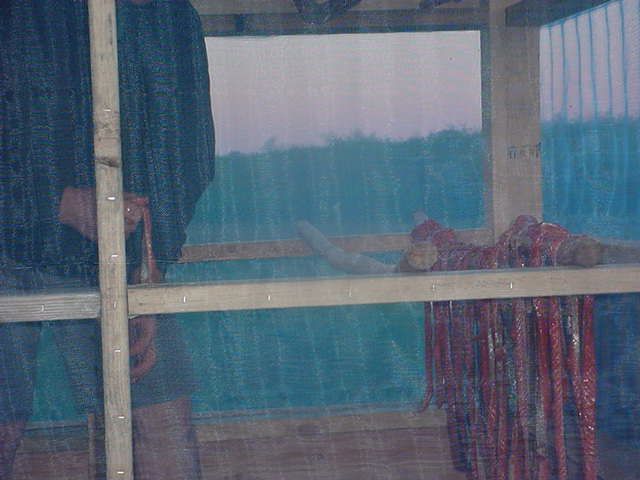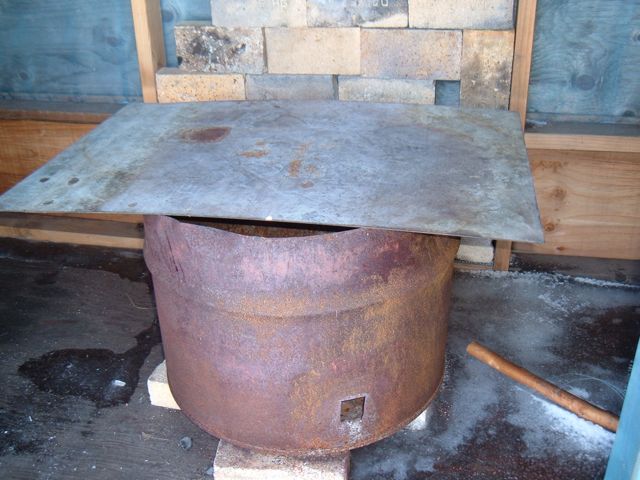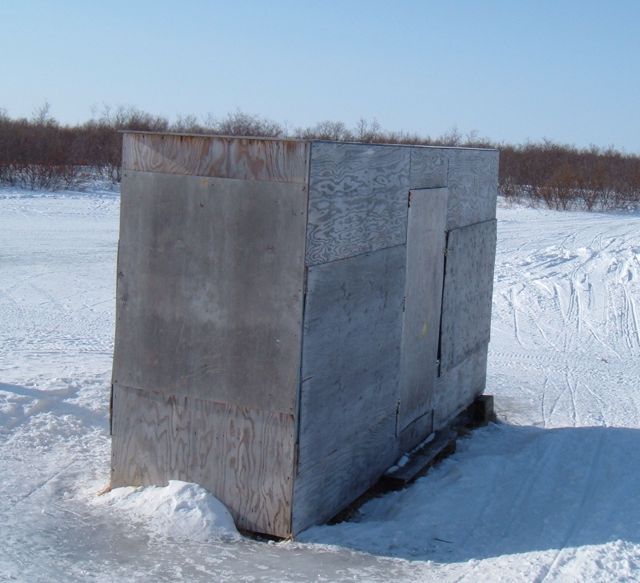
This is just a simple salmon smoke house that I built using some 2x4s and scraps of plywood and a roll of fly screen.
The year before I had used an old cheap tent. It worked, but only once. Between the fire, the smoke, the melted nylon, the dripping, and kids playing around it the tent just barely lasted long enough to finish a batch of salmon strips.
The idea here is that I want to keep the flys off of my fish. I know a lot of people don't mind the eggs and maggots on their fish, but because of my upbringing I just have an irrational aversion to flys laying eggs on my food. So call me squeemish -- whatever!

I think the photos show pretty clearly how I framed it together. It is 4 feet wide and 16 feet long (reduces the amount of cutting on the plywood sheets).
I covered the bottom section with plywood and the top section, but the three middle ones I left open and just covered them with fly screen. This allows the breeze to blow through. Depending on the weather, the strips need to air dry for about 4 to 6 days.
I made a door with a sheet of old plywood and some cheap hinges. It was warped so I added a hanging fly screen inside the door to keep the flys from getting in around the cracks of the door.
My wife cuts the strips. That is a whole other skill level. She learned it from our neighbors when we lived in Nunapitchuk.
That is me on the left pretending to help. We are standing near the river bank and that is the Lewis Angapak Memorial School in Tuntutuliak in the background. The smoke house is barely visible next to the boardwalk up nearer the school.
We mix the strips in a big pot with a mixture of brown sugar and soy sauce and then I hang them on alder sticks that I cut and peeled from the river bank.



